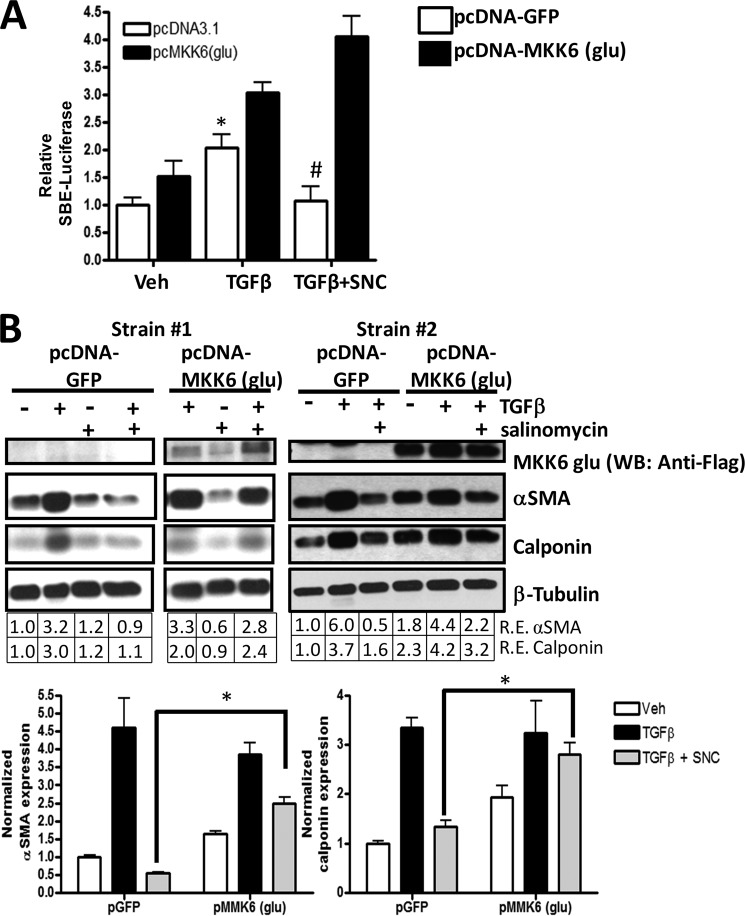FIGURE 8.
Expression of constitutively active MKK6 attenuates the inhibitory effect of salinomycin on TGFβ. A, a Smad-luc reporter, a constitutive CMV-Renilla reporter, and either a control plasmid (pcDNA-GFP) or the pcDNA3.1 FLAG-MKK6(glu) plasmid were introduced into human fibroblasts by electroporation. After electroporation, cells were treated with vehicle (Veh, DMSO), TGFβ, or TGFβ plus 250 nm salinomycin (SNC). After 24 h, cells were lysed, and luciferase activity was measured. Smad-luc activity was normalized to Renilla activity. As expected, TGFβ induced SBE-luc activity over vehicle treatment in both control plasmid and MKK6(glu) plasmid electroporated samples. Salinomycin blocked TGFβ-induced Smad-luc activity in control plasmid samples. However, the presence of MKK6(glu) attenuated the effect of salinomycin on Smad-luc activity. *, p < 0.01 in vehicle versus TGFβ; #, p < 0.01 in TGFβ versus TGFβ plus salinomycin for control pGFP electroporated cells. The experiment was repeated in triplicate in two different fibroblast strains. B, a control plasmid or the pcDNA3.1 FLAG-MKK6(glu) plasmid, which harbors the cDNA for a constitutively active MKK6 protein, was introduced into human fibroblasts by electroporation. Cells were then treated with vehicle, TGFβ, or TGFβ plus 250 nm salinomycin for 72 h. In cells expressing the control pGFP plasmid, TGFβ-induced αSMA and calponin expression was blocked by salinomycin. However, in cells expressing the MKK6(glu) plasmid, salinomycin did not block αSMA and calponin expression. The experiment was performed in three different fibroblast strains, with a representative experiment shown. WB, Western blot; R.E., relative expression. C, Western blot densitometry of the experiment shown in B. *, p < 0.01 in pGFP versus pMKK6(glu).

